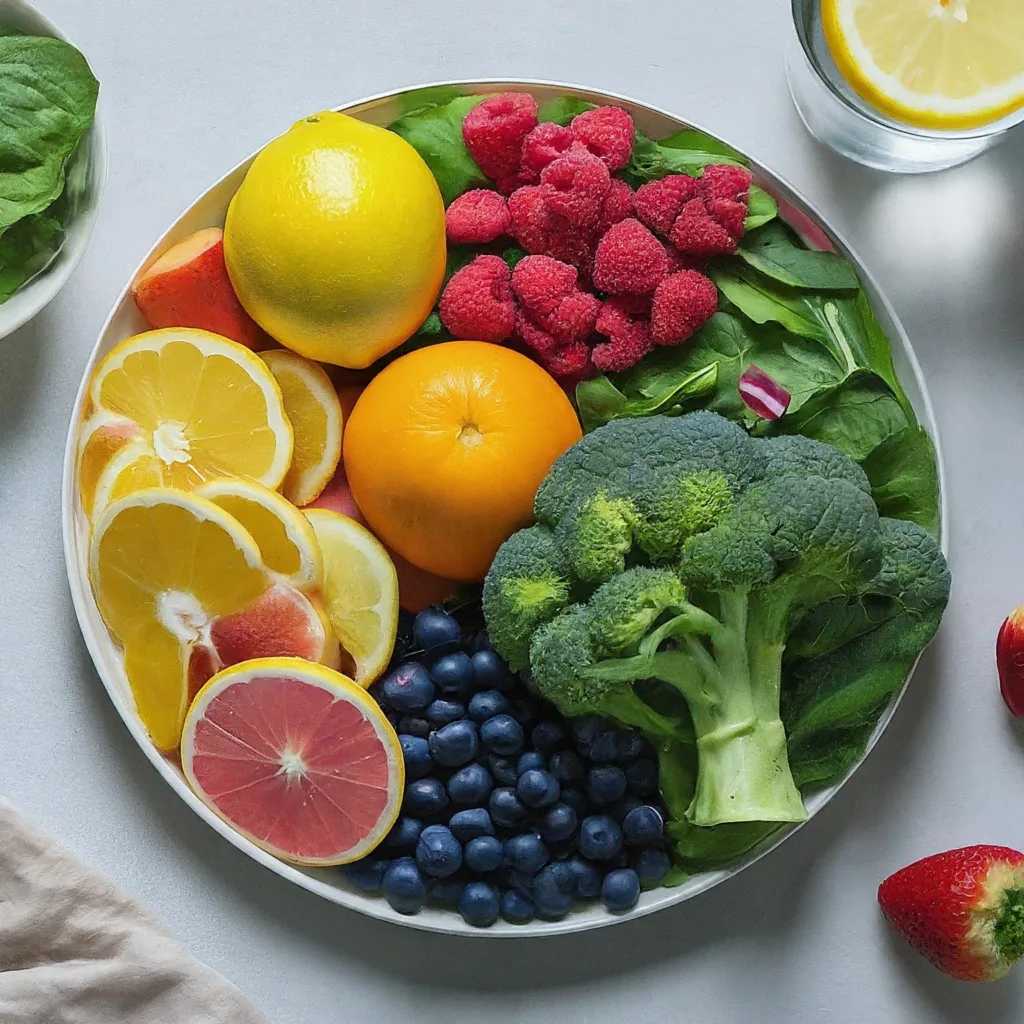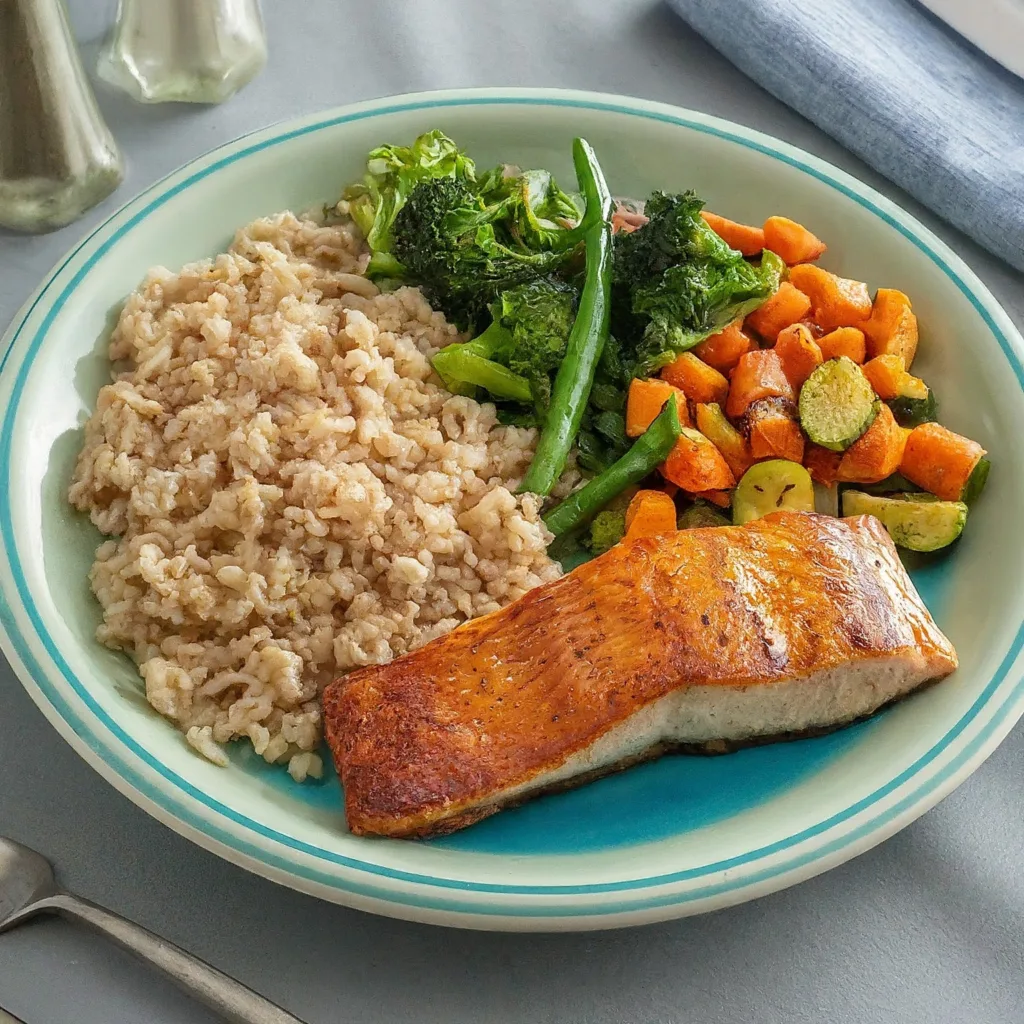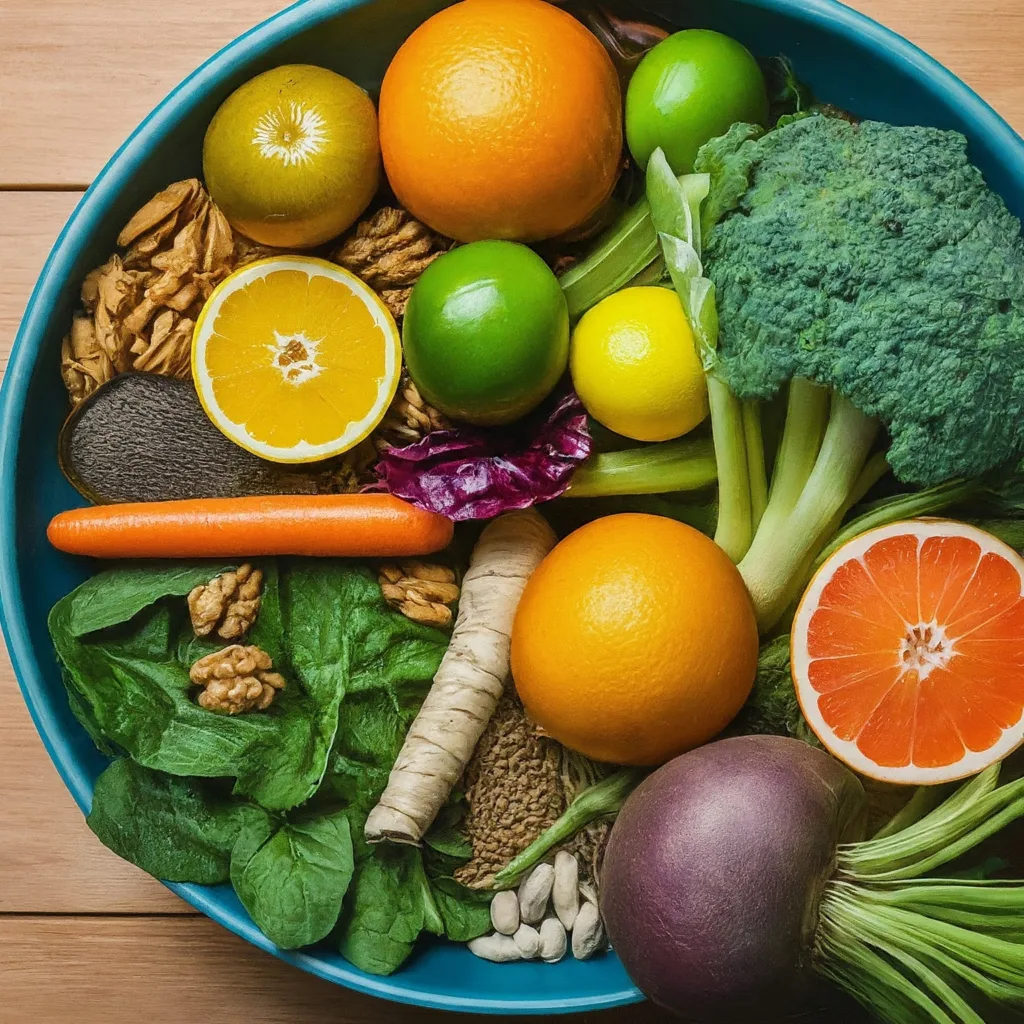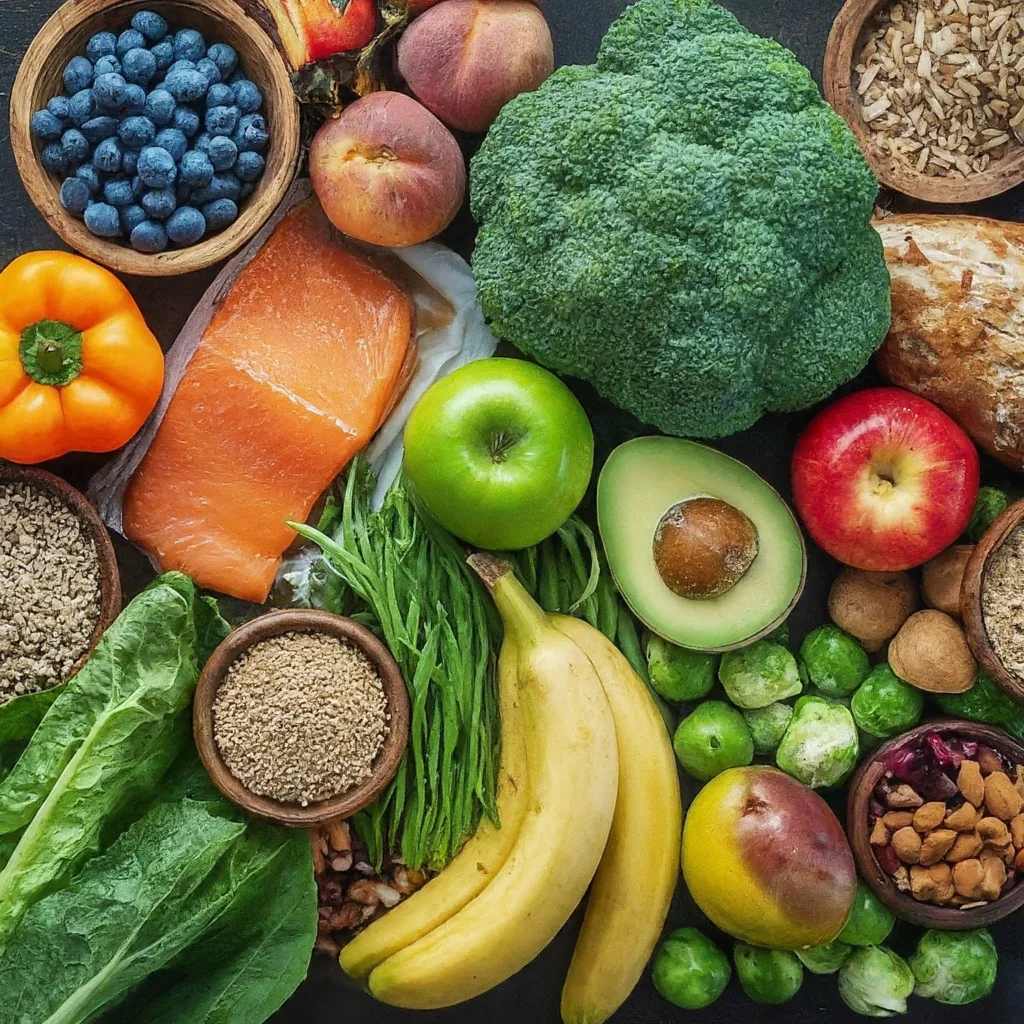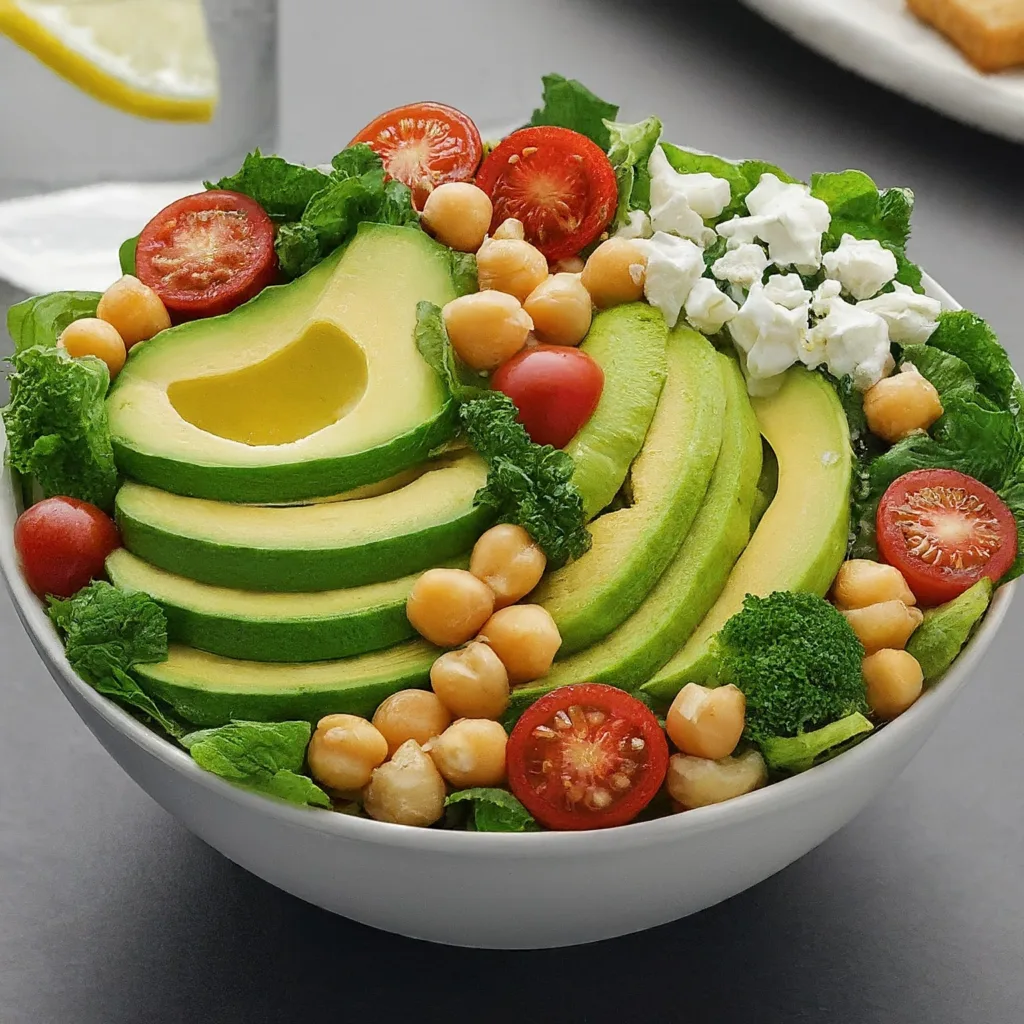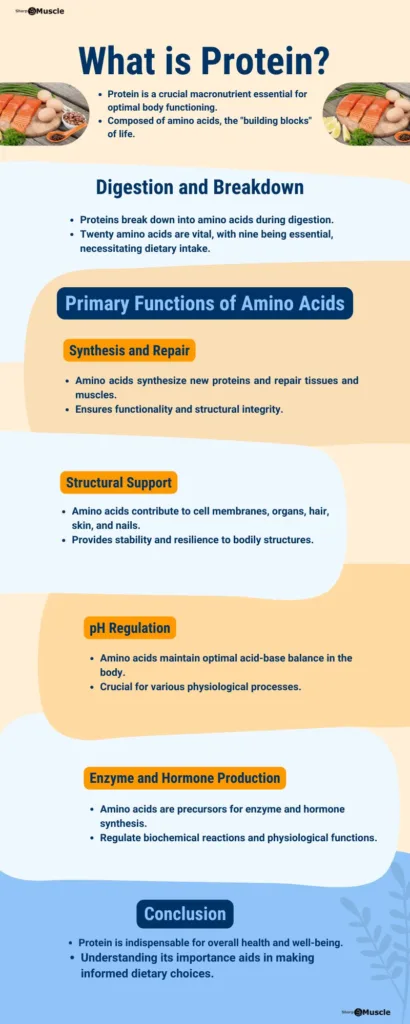The cholesterol diet is a healthy and balanced diet that can help you lower cholesterol and improve your heart health.
Studies have shown that people who eat a cholesterol diet have a lower incidence of cardiovascular events, such as heart attack and stroke.
How should you choose your diet? This article review natural way to achieve the goals you set in life, the cholesterol diet will help you to increase the “good” HDL cholesterol and lower the “bad” LDL cholesterol. In this it’s important to be determined, disciplined and follow the path that brings you closer to achieving your goal.
What is Cholesterol?
The Cholesterol is a waxy substance – technically a sterol – that is an important component of cell membranes. A waxy substance found in many common foods we eat, such as meats and full-fat dairy products. Your body needs cholesterol to process other foods and extract nutrients from them. Most of the cholesterol in the body is made in the liver, while the rest is absorbed from the diet.
Cholesterol is the basic raw material that the body uses to make vitamin D; sex hormones such as estrogen, progesterone and testosterone; and bile acids necessary for digestion. Cholesterol travels in particles called lipoproteins, the most common of which are high-density lipoprotein (HDL) and low-density lipoprotein (LDL).
What Is High Cholesterol?
High cholesterol is a silent killer that is often accompanied by no obvious symptoms. High cholesterol puts you at risk of life-threatening diseases like heart attack and stroke.
That said, your body doesn’t need high amounts of cholesterol. In fact, excess amounts can lead to a build-up of plaque in the walls of your arteries, which can lead to heart disease.
If you have been diagnosed with high cholesterol or have the potential to become a victim because of a family history, one thing is certain: you need to arm yourself with the knowledge and make changes to your lifestyle.
Causes of High Cholesterol
High cholesterol can be caused by a combination of various factors:
- Genes
- Obesity
- Lack of exercise or physical activities
- Age
- Too much alcohol
- Fatty food
- Other conditions
1. Genes
Your genes and family history can determine how your body processes the fat consumption. Familial hypercholesterolemia is a genetic disease that causes too much cholesterol in the blood, leading to early heart disease. If one of your parents has familial hypercholesterolemia, there is a 50% chance that you will also have it.
According to the National Human Genome Research Institute, most adults with the condition have total cholesterol levels above 300 mg/DL and LDL levels above 200 mg/DL.
2. Obesity
Having excess body weight or having a body mass index (BMI) of 30 or higher increases the risk of high cholesterol. 1 2
3. Lack of exercise or physical activities
Regular exercise and physical activity reduce your body fat and lower cholesterol levels. With a sedentary lifestyle, the likelihood of high cholesterol increases. 3 4
Physical activities help boost your body’s HDL (good) cholesterol, while increasing the size of the particles that make up LDL (bad) cholesterol, which makes it less harmful.
4. Age
Age has a major impact on the level of cholesterol in your body. Older people are more likely to have elevated cholesterol levels. 5 6
Before menopause, women have the lower cholesterol levels than men of the same age. This is because women are designed to process more fat than is needed for pregnancy and childbirth. However, after menopause, hormones stop secreting and this changes the way a woman’s body processes cholesterol.
5. Too much alcohol
Binge-drinking can lead to high cholesterol levels. Alcohol contains calories that will make you gain your unwanted weight. 7 8
6. Fatty food
Food and health go hand in hand. When you consume a lot of fatty foods, the excess fat from the foods gets converted into cholesterol, and it stays in your body. 9 10
7. Other conditions
High levels of cholesterol can also be caused by certain other conditions, such as diabetes, liver disease, kidney disease, polycystic ovary syndrome, and conditions that increase female hormones, such as pregnancy.
These are the main causes of cholesterol. If you look closely, you’ll see that many of them are lifestyle factors. If you want to keep cholesterol at bay, you will have to change your lifestyle and adopt more healthy and balance diet habits.
What is HDL (good) Cholesterol?
HDL is considered “good” cholesterol because it helps remove the so-called “bad” cholesterol, LDL. When measured, HDL levels should be as high as possible, preferably 60 milligrams per decilitre of blood (mg/DL) and above. A healthy weight, physical activity and a diet that includes healthy fats such as olive oil are believed to keep HDL levels high. 11
HDL is more strongly controlled by genetics than LDL. A 2011 study from the National Institutes of Health, AIM-HIGH, found that raising HDL did nothing to prevent heart attack, stroke, or death. And not all HDLs are created equal. HDL-2 particles are large and buoyant and most protective.
On the other hand, HDL-3 particles are smaller and denser and can be inflammatory. HDL-2 is anti-inflammatory and anti-atherogenic (atherosclerosis is the condition in which the artery wall becomes thickened by the accumulation of fatty substances, called plaques, which, driven by inflammation, block the flow of blood to and from the heart). HDL-3, on the other hand, is poorly understood. You want to get a higher level of HDL-2 than HDL-3.
It is generally agreed that higher levels of HDL are desirable, but research is focusing on the function of HDL subtypes rather than the total amount.
Daniel Rader, director of preventive cardiology at the University of Pennsylvania, wrote in the New England Journal of Medicine, “Recent scientific findings have directed growing interest towards the concept that the blood, rather than its levels, measures the function of HDL. It may be more important to assess cardiovascular risk and evaluate new HDL-targeted therapies.”
What is LDL (bad) Cholesterol?
LDL is the “bad” cholesterol because it can build up in the arteries, obstructing blood flow. Its level should be kept low. Current standards are 100 to 129 mg/DL, with less than 100 being the target for people at risk of heart disease, and less than 70 for those at high risk. Too much saturated fat in the diet, inactivity and being overweight are thought to raise LDL levels. 12
Not all LDLs are created equal. LDL-A is a buoyant, fluffy molecule that does no harm unless it is damaged by oxidation (a process caused by free radicals that enable cholesterol to form plaque). LDL-B is a small, hard, dense, molecule which promotes atherosclerosis. A pattern of high LDL-A is most beneficial. The blood tests today can also measure the number of LDL-A and LDL-B particles. 13 14
The most important cholesterol particle of all, that conventional tests do not focus on, is Lp(a). Lp(a) is a very small, highly inflammatory particle which is thrombogenic (blood clots). Low levels of Lp(a) are not a problem in a healthy body. Lp(a) circulates damaged blood vessels and performs repair and restoration work. However, the more repairs you need in your arteries, the more Lp(a) will be used. Lp(a) concentrates at the site of damage, binds with certain amino acids within the damaged blood vessel wall, dumps its LDL cargo, and begins to promote the deposition of oxidized LDL into the wall, Which leads to more inflammation and eventually to plaque.
In addition, Lp(a) promotes the formation of the blood clots over the newly formed plaque, that further narrows the blood vessels.
What is Triglycerides?
Triglycerides are another form of fat, and they are used to storing excess energy from your diet. High levels of triglycerides in the blood are related to arterial sclerosis. High triglycerides are caused by being overweight and blubber, physical inactivity, cigarette smoking, excessive alcohol consumption and a diet too high in carbohydrates. People with high triglycerides usually have a high total cholesterol level, including the LDL cholesterol (bad) level and the HDL cholesterol (good) level. Many people with heart disease or polygenic disease (diabetes) also have high glyceride levels.
How is cholesterol measured?
The standard blood test will tell your total cholesterol level and your HDL and LDL levels.
Measure cholesterol with the new particulate test, which tells you how much of your LDL is type A and how much of your LDL is type B. Measure the number of actual particles and the amount of potentially dangerous Lp(A). That’s the only information that matters.
How to Detect High Cholesterol?
The only way to know if your cholesterol levels are high is with a blood test called a lip profile or lipid panel. A blood sample taken from your arm will be used to measure your cholesterol level. Your doctor will advise you not to eat and drink only water for 9-12 hours before the test to make sure it will not affect the test result.
Guidelines for Cholesterol Blood Test Results
The lipid fat profile test will show the following levels:
- Total cholesterol
- Low Density Lipoprotein (LDL)
- High Density Lipoprotein (HDL)
- Triglycerides
High levels of LDL, also known as “bad cholesterol”, can increase the risk of heart disease, including the heart attack and stroke. On the other hand, HDL, known as “good cholesterol”, helps to remove LDL from the blood, and may reduce the risk of heart problems.
In the United States, levels are measured in milligrams (mg) per decilitr (dL), while in Canada and most European countries, cholesterol is measured in mmol (millimole) per L (liter), so don’t get confused about it.
The following are general guidelines for cholesterol blood testing:
1. Total Cholesterol
| Total Cholesterol | Results |
|---|---|
| Below 200 mg/dL (5.2 mmol/L) | Desirable |
| 200–239 mg/dL (5.2–6.2 mmol/L) | Borderline |
| 240 mg/dL and over (above 6.2 mmol/L) | High |
2. LDL Cholesterol
| LDL Cholesterol | Results |
|---|---|
| Less than 100 mg/dL (2.6 mmol/L) | Optimal |
| 100–129 mg/dL (2.6–3.3 mmol/L) | Almost optimal |
| 130–159 mg/dL (3.4–4.1 mmol/L) | Borderline |
| 160–189 mg/dL (4.1–4.9 mmol/L) | High |
| 190 mg/dL and over (over 4.9 mmol/L) | Very High |
3. HDL Cholesterol
| HDL Cholesterol | Results |
|---|---|
| Below 40 mg/dL (1 mmol/L) for men; Below 50 mg dL (1.3 mmol/L) for women | Poor and at risk of heart diseases |
| 50–59 mg/dL (1.3–1.5 mmol/L) | Much better |
| 60 mg/dl and over (over 1.5 mmol/L) | Considered the best |
4. Triglycerides
| Triglycerides | Results |
|---|---|
| Below 150 mg/dL (1.7 mmol/L) | Desirable |
| 150-199 mg/dL (1.7-2.2 mmol/L) | Borderline high |
| 200-499 mg/dL (2.3-5.6 mmol/L) | High |
| 500 mg/dL and above (above 5.6 mmol/L) | Very high |
Diseases related to high cholesterol
High levels of cholesterol in the bloodstream cause a build-up of plaque in the walls of blood vessels. The plaque gradually narrows the lumen of the blood vessels. When blood flow is interrupted, several life-threatening risks arise:
- Coronary heart disease: Over time, plaque contributes to hardening of the arteries, a condition called atherosclerosis that narrows the coronary arteries. This hinders the supply of oxygen and nutrients to the heart. The lack of oxygen and nutrients damages the heart muscles and reduces their ability to pump blood. In the worst case, plaque triggers the formation of blood clots in the arteries, and blood clots block the arteries completely, cutting off the blood supply to the heart. Without oxygen and nutrients, the heart stops beating, resulting in a heart attack, and possibly death.
- Stroke: Cholesterol plaque can also disrupt the blood supply to the brain. When the brain doesn’t get enough blood, it becomes deprived of oxygen. The brain cells will be damaged and die, resulting in a stroke.
- Peripheral vascular disease: when cholesterol plaque obstructs blood flow to other parts of the body, such as the arms and legs, it can cause numbness, pain and perhaps tissue death, or gangrene.
- The other complications that have been linked to high cholesterol are:
- High blood pressure
- Gallstones
- Type 2 diabetes
- Intestinal ischemic syndrome
Home remedies and change your lifestyle
The best way to manage cholesterol is to make changes in your lifestyle. Although cholesterol medications can return LDL levels to their normal range, most drugs only target the symptoms of the condition and are not designed to address the true source of high cholesterol or provide a long-term solution.
Healthy lifestyle changes can not only improve the cholesterol levels, but the overall health as well. If bad habits are contributing to your cholesterol status, it’s time to take action and make changes.
1. Physical activity
It has been scientifically proven that regular exercise can help fight many health problems, and high cholesterol is one of them. Although researchers have spent many years wondering what the exact relationship is between physical activity and cholesterol, today they have a much clearer picture of that link:
- Physical activity can stimulate enzymes that move LDL cholesterol to the liver.
- Physical activity increases the size of the protein particles that are responsible for carrying cholesterol through the bloodstream.
- Another obvious fact is that physical activity helps you lose weight, and being overweight is said to increase your risk of high cholesterol.
If you’re looking for advice on when to start exercising, which exercises are good for lowering cholesterol, how long you should exercise, and how often, you may come across many theories. To avoid confusion, you can:
Start with small and slow
It is essential for you to start small and slow until you are in excellent shape. Start with a 20-minute walk daily. Increase the length of the walk, as well as the pace, every two days. Do this until you are jogging at a moderate pace.
Keep your exercise interesting
Many people hate exercise because they find it boring, but if you make it interesting it won’t be boring. If you don’t like the gym, try different sports, exercise in the park, go swimming, sign up for an aerobic class, etc.
Stick to your schedule
If you want to achieve the goal and lower cholesterol, it’s important for you to stick to the program. Don’t try to find excuses to skip exercise. If the weather doesn’t allow you to go jogging, try a gym, or maybe do some push-ups and jumping jacks. The important thing is to be proactive.
Do not overdo your activities
Don’t try to speed up the process by overtraining and exhausting yourself. Know that you can’t lower your cholesterol levels overnight, so be patient. Don’t do activities if you’re not ready. Instead, try to slowly build up your position until you get there.
This all sounds great, but what if your busy schedule doesn’t give you half an hour to work every day?
- Try to get up about half an hour earlier and go jogging first thing in the morning.
- Turn your normal daily chores into exercise. Vacuuming, dusting, mopping, mowing your lawn, and grocery shopping can all help keep you active.
- Take the stairs. Don’t wait for the lift to arrive at your office.
- If possible, go to work. If not, get off the bus/train a stop or two earlier, and do some extra walking.
- After dinner, dance or play with your kids or dog.
2. Limit Your alcohol consumption
You’ve probably heard that red wine lowers heart attack risk, but before you refill that glass, read more about red wine and alcohol in general and how it affects your cholesterol levels.
Red wine has some beneficial properties due to antioxidant components, such as resveratrol. Studies have shown that, in a way, red wine may, in fact, limit the atherosclerosis process and therefore reduce the risk of developing heart disease, but experts warn that frequent consumption can lead to many health problems. The risk of conditions may increase.
You’ve often heard about the ill effects that alcohol can have on health in general, but the National Institutes of Health (NIH) does not recommend absolute abstinence. Studies have shown that when consumed in moderation (one alcoholic drink per day for women and two drinks for men), alcohol can reduce blood clotting and raise HDL cholesterol levels. If consumed more than recommended, however, alcohol will have the opposite effect. It is known that excessive alcohol consumption also increases triglyceride levels and LDL cholesterol.
So you don’t have to be spoiled at the next meeting with your friends. As long as you switch to water later, you can still enjoy a drink or two.
3. Don’t smoke
You would think that all the quit smoking campaigns, disturbing images on cigarette packs, and ads pointing out the risks of smoking would be a warning sign for individuals to quit smoking, but even so, 46 million smoke in the United States alone. Many smokers are not fully aware of the dangers of smoking. First understand the connection between smoking and cholesterol, and then you can decide whether you should light another cigarette.
A study conducted by the University of Wisconsin School of Medicine and Public Health found that people who stop smoking have a 5% increase in their HDL cholesterol, which can reduce the risk of many health complications and diseases. In addition, a relatively short time after quitting, improvements in lipids and reductions in LDL cholesterol and triglyceride levels can be observed.
When the smoker suddenly quits, his desire does not go away. When the desire is almost unbearable, an easy way to ‘scratch the itch’ is to eat food. This is why some smokers gain a few pounds after quitting. However, studies have shown that every single cigarette you don’t smoke works to raise your HDL cholesterol levels even as you gain weight.
The World Health Association reports that smoking accounts for 10% of all heart disease cases. The toxic chemicals in cigarette smoke, such as nicotine and carbon monoxide, have been shown to accelerate the process of atherosclerosis. The tar found in cigarette smoke is a black, sooty substance that coats the lungs and limits the perfusion of oxygen into the blood. Second-hand smoke exposes you to toxic chemicals similar to smoke. Non-smokers who live with smokers have a 30% increased risk of developing heart disease.
How do you quit smoking for good?
You might be tempted to throw out your cigarette and announce your resolution to quit smoking forever, but going cold turkey isn’t as easy as it sounds. Many people who try to quit smoking suddenly and without any treatment relapse. Without cigarettes, the body goes through the symptoms of nicotine withdrawal, which include headache, drowsiness, and anxiety. Nicotine gum, patches and electronic cigarettes can help ease the symptoms of nicotine withdrawal.
Don’t quit smoking at all. Tell your family, friends, and even co-workers about the plan to stop smoking. Their encouragement will help activists with your plan to stop smoking. Their encouragement will help you succeed. One of the common reasons people smoke is to relieve stress. If you’re planning on quitting, you need new ways to deal with stress. Listening to music, yoga, and massage sessions can reduce stress.
Nutrition and diet advice to lower cholesterol
Eat less than 300 milligrams of cholesterol a day and less than 10 percent of your calories in the form of saturated fat.
According to the Framingham Heart Study, individuals who consumed the most cholesterol in their diet did not have higher blood cholesterol levels than individuals who consumed the least. The effect of a nutritional cholesterol diet on blood (serum) cholesterol is very variable and individual, and for most people – although not all – the effect of a nutritional cholesterol diet on serum cholesterol is negligible.
In any case, because cholesterol isn’t as important a risk factor for heart disease as it was once believed, it doesn’t matter. Saturated fat raises cholesterol, but it raises the good portion of overall HDL cholesterol and LDL cholesterol (LDL-A) the bad portion of LDL cholesterol (LDL-B). There is no evidence that supports a direct link between saturated fat and heart disease.
Foods to avoid in your cholesterol diet plan
There are certain types of foods that can raise your bad cholesterol levels significantly. Be sure not to include these foods in your cholesterol diet plan:
Liver
Liver is not a good choice for you, when you have high cholesterol. Don’t let the fact that it’s high in iron fool you. While it can increase your hemoglobin, the liver has a tendency to raise your LDL cholesterol. Avoid all other animal organs, such as brains and sweet breads.
Butter
Avoiding butter sounds impossible, doesn’t it? Although butter smells and tastes good, you can cut it out of your cholesterol diet plan when you are looking to lower cholesterol. This also applies to other animal fats and oils, such as shortening.
Ghee
Well, then you can replace butter with ghee in your cholesterol diet- if you don’t want to control your cholesterol level. Ghee is high in saturated fat, which you should avoid as much as possible.
Shellfish and shrimp
Although there are many benefits associated with shellfish and shrimp, if you have high cholesterol or heart disease, you should probably skip that seafood risotto you were planning to add in your cholesterol diet. One ounce of lobster contains more than 20 milligrams of cholesterol.
Coconut oil
Despite the fact that many nutritionists strongly recommend coconut oil for a number of conditions such as inflammation, it is high in saturated fat. If you don’t want coconut oil to have an effect on your cholesterol, only small amounts of the oil are allowed. It’s true that coconut oil raises your HDL cholesterol, but it also raises your LDL. The American Heart Association suggests no more than a teaspoon of coconut oil a day.
Fried food
You don’t need to be a nutritionist to know what fried foods do for your health. Apart from its crunchy taste, you cannot say anything good about fried food. It is rich in saturated fat and calories, and should not be part of your cholesterol diet. For example, by eating onion rings, you will not get the benefits of healthy nutrients present in onions.
Whole-fat dairy products
Benefits of dairy products: Vitamins, calcium, minerals, protein and many other nutrients that are important for your health. However, whole-fat milk and yogurt are high in calories, and loaded with cholesterol and saturated fat that will raise your cholesterol levels.
Processed meat
Processed meat is one of the first things you should exclude from your cholesterol diet menu list. Foods such as bacon, sausage, salami, ham, corned beef and other processed meats have been linked to a number of health problems, including heart disease and high cholesterol. They contain about 50% more sodium than unprocessed meats, and you should avoid them at all times.
Trans fat
Several studies have shown that trans fats increase LDL levels while reducing HDL levels in the blood. Trans fats stimulate plaque build-up, clog arteries, and increase the risk of heart attack and stroke.
The trans fats found in cookies, baked goods, cream pies and margarine sticks. When buying groceries, double-check the trans fat section on the Nutrition Facts label, and avoid foods that contain ‘partially hydrogenated’ or ‘hydrogenated vegetable oils.’
Cholesterol Diet Plan for all age Men and Women
| Upon waking-up | Quantities |
|---|---|
| Garlic (on empty stomach) | ½ clove |
| Meal-1 (Breakfast) | Quantities |
|---|---|
| Oats | ½ cup |
| Apple | ½ |
| Raisins | 2 sp |
| Chia seeds | 2 sp |
| Cinnamon | 2 pinch |
| Alternates | Quantities |
|---|---|
| Bran Cereals | 1 cup |
| Whole Grain Cereals | 1 cup |
| Almond Milk or Soy Milk | 1 cup |
| Strawberries/Blueberries | 1 cup |
| Flax seeds or Sesame Seeds | 2 spoons |
| Cherries | 1 cup |
| Pear | 1 whole |
| Meal-2 (Morning snack) | Quantities |
|---|---|
| Papaya | 1 cup |
| Guava | 1 cup |
| Cashews (non-salted) | 10 |
| Alternates | Quantities |
|---|---|
| Almonds/Walnuts/Peanuts | 28 g |
| Grapes/Strawberries/ Berries/Cherries | 1 cup |
| Green or Herbal Tea | 1 cup |
| Meal-3 (Lunch) | Quantities |
|---|---|
| Rice Palao: | |
| Cooked Brown Rice | ½ cup |
| Add vegetables: | |
| Peas | |
| Cauliflower | |
| Carrots | |
| Bell pepper | |
| Onion | |
| Tulsi | |
| Low fat Yogurt (Curd) | 1 cup |
| Alternates | Quantities |
|---|---|
| Flattened Rice (Poha) | ½ cup |
| Add any other vegetable as well |
| Meal-4 (Evening snack) | Quantities |
|---|---|
| Black Grapes & Orange: | |
| Black Grape | 1 cup |
| Orange | 1 whole |
| Alternates | Quantities |
|---|---|
| Pomegranate | 1 cup |
| Meal-5 (Dinner) | Quantities |
|---|---|
| Bean Bowl: | |
| Kidney Beans | ½ cup |
| Onion | 2 spoons |
| Tomato | 2 spoons |
| Paneer | 50 g |
| Carrot (chopped) | ½ |
| Cucumber (chopped) | ½ |
| Lemon | ½ |
| Little bit cilantro | – |
| Alternates | Quantities |
|---|---|
| Black Kidney Beans | ½ cup |
| Lentil | ½ cup |
| Grilled Chicken | 60 g |
| Soy Chunks | 50 g |
| Add any other vegetable as well |
Combine cholesterol diet with exercise plan
- Obesity workout plan
- Hypertension exercise plan
- 1-Hour Outdoor Walk or on Treadmill Every day or Gym Workout
- Milyani AA, Al-Agha AE. The effect of body mass index and gender on lipid profile in children and adolescents in Saudi Arabia. Ann Afr Med. 2019 Jan-Mar;18(1):42-46. doi: 10.4103/aam.aam_17_18. PMID: 30729932; PMCID: PMC6380115.[↩]
- Fruh SM. Obesity: Risk factors, complications, and strategies for sustainable long-term weight management. J Am Assoc Nurse Pract. 2017 Oct;29(S1):S3-S14. doi: 10.1002/2327-6924.12510. PMID: 29024553; PMCID: PMC6088226.[↩]
- Albarrati AM, Alghamdi MSM, Nazer RI, Alkorashy MM, Alshowier N, Gale N. Effectiveness of Low to Moderate Physical Exercise Training on the Level of Low-Density Lipoproteins: A Systematic Review. Biomed Res Int. 2018 Nov 1;2018:5982980. doi: 10.1155/2018/5982980. PMID: 30515408; PMCID: PMC6236809.[↩]
- Mann S, Beedie C, Jimenez A. Differential effects of aerobic exercise, resistance training and combined exercise modalities on cholesterol and the lipid profile: review, synthesis and recommendations. Sports Med. 2014 Feb;44(2):211-21. doi: 10.1007/s40279-013-0110-5. PMID: 24174305; PMCID: PMC3906547.[↩]
- Beckett N, Nunes M, Bulpitt C. Is it advantageous to lower cholesterol in the elderly hypertensive? Cardiovasc Drugs Ther. 2000 Aug;14(4):397-405. doi: 10.1023/a:1007812232328. PMID: 10999646.[↩]
- Downer B, Estus S, Katsumata Y, Fardo DW. Longitudinal trajectories of cholesterol from midlife through late life according to apolipoprotein E allele status. Int J Environ Res Public Health. 2014 Oct 16;11(10):10663-93. doi: 10.3390/ijerph111010663. PMID: 25325355; PMCID: PMC4211000.[↩]
- Rosoff DB, Charlet K, Jung J, Lee J, Muench C, Luo A, Longley M, Mauro KL, Lohoff FW. Association of High-Intensity Binge Drinking With Lipid and Liver Function Enzyme Levels. JAMA Netw Open. 2019 Jun 5;2(6):e195844. doi: 10.1001/jamanetworkopen.2019.5844. PMID: 31199452; PMCID: PMC6575145.[↩]
- Traversy G, Chaput JP. Alcohol Consumption and Obesity: An Update. Curr Obes Rep. 2015 Mar;4(1):122-30. doi: 10.1007/s13679-014-0129-4. PMID: 25741455; PMCID: PMC4338356.[↩]
- Institute of Medicine (US) Committee on Diet and Health; Woteki CE, Thomas PR, editors. Eat for Life: The Food and Nutrition Board’s Guide to Reducing Your Risk of Chronic Disease. Washington (DC): National Academies Press (US); 1992. Chapter 6, Fats, Cholesterol, And Chronic Diseases. Available from: https://www.ncbi.nlm.nih.gov/books/NBK235018/.[↩]
- https://www.nhs.uk/live-well/eat-well/food-types/different-fats-nutrition/[↩]
- YOUR GUIDE TO U.S. DEPARTMENT OF HEALTH AND HUMAN SERVICES. National Institutes of Health. National Heart, Lung, and Blood Institute. NIH Publication No. 06–5270. November 2005. Living Well With Heart Disease. Available from: https://www.nhlbi.nih.gov/files/docs/public/heart/living_well.[↩]
- Linton MRF, Yancey PG, Davies SS, et al. The Role of Lipids and Lipoproteins in Atherosclerosis. [Updated 2019 Jan 3]. In: Feingold KR, Anawalt B, Blackman MR, et al., editors. Endotext [Internet]. South Dartmouth (MA): MDText.com, Inc.; 2000-. Available from: https://www.ncbi.nlm.nih.gov/books/NBK343489/.[↩]
- Feingold KR. Utility of Advanced Lipoprotein Testing in Clinical Practice. [Updated 2023 Jan 3]. In: Feingold KR, Anawalt B, Blackman MR, et al., editors. Endotext [Internet]. South Dartmouth (MA): MDText.com, Inc.; 2000-. Available from: https://www.ncbi.nlm.nih.gov/books/NBK355893/.[↩]
- Bowden RG, Wilson RL, Beaujean AA. LDL particle size and number compared with LDL cholesterol and risk categorization in end-stage renal disease patients. J Nephrol. 2011 Nov-Dec;24(6):771-7. doi: 10.5301/JN.2011.6376. PMID: 21360474; PMCID: PMC4313745.[↩]



